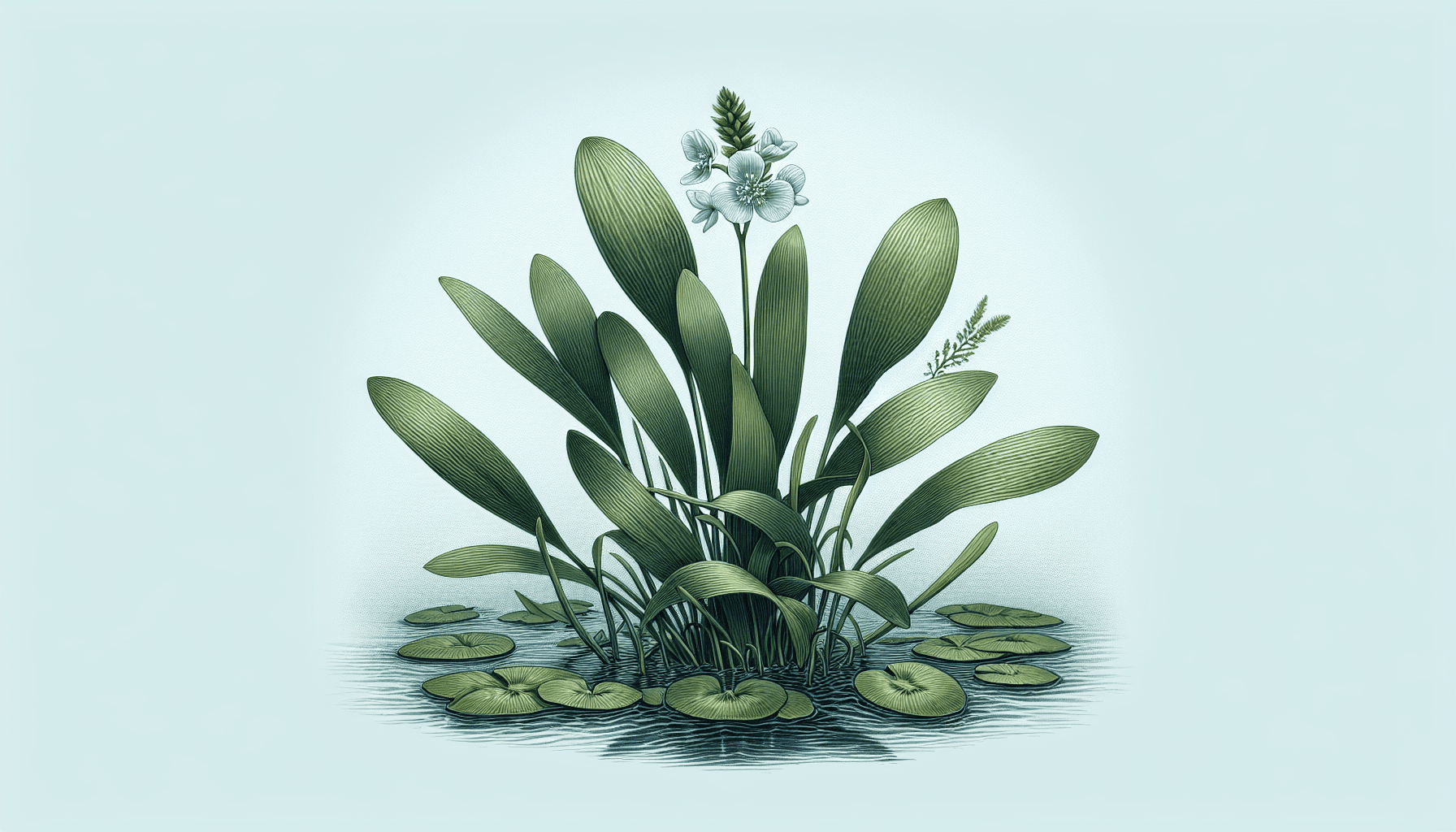If your inclination is towards understanding diverse aquatic flora, then your curiosity shall certainly be quenched with this intriguing study. Acquaint yourself with the particular aquatic weed known as Sagittaria Engelmanniana. Discover how this seemingly unassuming plant has a captivating story to tell, from its unique morphology to its ecological significance. This leafy water resident, native to the Americas, wields a unique combination of features that set it apart from its fellows, demanding a unique spotlight in the expansive world of aquatic botany. Expect an invigorating examination of this aquatic plant, with insights into its classification, distribution, and the vital role it plays in its aquatic ecosystem.

Definition of Sagittaria Engelmanniana
Sagittaria Engelmanniana, also known as the Arcuate Arrowhead or angling arrowhead, is a species of aquatic plant belonging to the Alismataceae family. It is often referred to as an aquatic weed due its invasive nature in non-native environments.
Scientific Classification
The scientific classification of this species is as follows: Kingdom is Plantae, Phylum is Tracheophyta, Class is Magnoliopsida, Order is Alismatales, Family is Alismataceae, Genus is Sagittaria, and the species is Engelmanniana.
Common Names
Besides being referred to as the Engelmann’s Arrowhead, the plant is also commonly called the duck potato, shield plant, or arrowleaf in certain regions due to its leaf shape and utilizations.
Physical Description
Leaf Structure
The Sagittaria Engelmanniana is characterized by its verdant, sagittate (arrow-shaped) leaves that emerge from a central point forming a rosette. These leaves range in size but can reach upwards of 45 centimeters in ideal conditions.
Flowers and Fruits
The plant produces numerous three-petaled white flowers with a yellow center between the months of July and September. This is followed by the production of fruits, which are tiny, 1-2 mm wide, and often hidden within the remaining flower.
Root System
The root system of Sagittaria Engelmanniana possesses a unique feature, tubers, that serve as a mechanism for survival during adverse conditions and propagation during favorable conditions.
Habitat and Distribution
Geographical Spread
Native to North America, the Arcuate Arrowhead is found in wetland environments such as marshes, ponds, and slow-running streams. Its range extends from Eastern Canada down to Florida and westward to Texas.
Ideal Growing Conditions
Sagittaria Engelmanniana thrives in areas of full sunlight with moist or submerged soil. Its tendency to create dense colonies allows it to readily occupy available space, especially in shallow water bodies.
Invasiveness
While not typically an invasive species within its indigenous range, it can become quite invasive when introduced to novel environments, quickly spreading and potentially having detrimental effects on local biodiversity.

Life Cycle of Sagittaria Engelmanniana
Seed Germination
Germination of Sagittaria Engelmanniana seeds occurs in early spring, once temperatures and light levels are favorable.
Growth and Development
Once germinated, the seedlings develop leaves and an extensive root system including tubers which aid in their ability to withstand harsh environmental conditions.
Reproduction and Flowering
Flowering and subsequent fruit production typically occur in the late summer and fall months. They are predominantly pollinated by insects, although self-pollination can occur.
Ecological Role
Interactions with Wildlife
The seeds, tubers, and young shoots of Sagittaria Engelmanniana are a favorite food source for many types of waterfowl. In addition, it can provide cover for various types of fish, amphibians, and small mammals residing within wetland environments.
Role in Ecosystem
As a primary producer, this plant plays a crucial role in photosynthesizing and thus producing energy that enters the ecological food chain. It also aids in maintaining the structural integrity of the wetland ecosystem as a result of its dense root system.
Potential as Bioindicator Species
Due to its sensitivity to water quality and preferences for certain habitat conditions, it can potentially act as a bioindicator species in aquatic ecosystems.
Human Uses and Benefits
Food Source
Many indigenous cultures in North America utilized the tubers, young shoots, and seeds as a food source.
Ornamental Use
Their appealing flowers and unique leaf structure makes them favorable for ornamental use in water gardens and aquascaping projects.
Potential Medicinal Uses
Historically, some indigenous cultures have utilized Sagittaria Engelmanniana for medicinal purposes, although scientific validation of these uses is still lacking.
Impact on Aquatic Environments
Effects on Water Quality
If unchecked, dense growth of Sagittaria Engelmanniana can lead to decreased oxygen levels in the water, impacting other native plant and animal species.
Influence on Aquatic Life
The invasive nature of Sagittaria Engelmanniana can potentially lead to domination of habitats, thereby reducing biodiversity and altering the composition of the aquatic community.
Implications for Fishing Industry
As an aquatic weed, it can create problems for the fishing industry by causing obstructions and entangling fishing equipment.
Managing Sagittaria Engelmanniana
Removal Techniques
Mechanical removal, including hand-pulling and cutting, can be effective ways of reducing Sagittaria Engelmanniana populations, provided it is done regularly.
Preventative Measures
Limiting the plant’s access to advantageous growing conditions, such as nutrient-rich water bodies, can serve as a preventative measure against its spread.
Biological Control Methods
Currently, there is little research on biological control methods for managing Sagittaria Engelmanniana, presenting potential avenues of future scientific exploration.
Cultivation and Care
Planting Guidelines
When planting Sagittaria Engelmanniana, handle the tubers gently and plant them in water-saturated soil, ensuring they are properly anchored.
Water and Light Requirements
For optimal growth, they require full sun – at least six hours per day – and should be kept in shallow water.
Dealing with Pests and Diseases
While relatively resistant, potential pests include water snails which are known to feed on the plant.
Scientific Research and Studies
Genetic Studies
Genetic studies on Sagittaria Engelmanniana can help provide insight into its adaptability to various environments and its invasive capabilities.
Research on Invasive Traits
Further research is needed to fully understand the factors that encourage its invasiveness and to develop strategies for containment and control.
Projects on Conservation and Management
Given its ecological role, projects aimed at conservation and management of Sagittaria Engelmanniana must take into account its potential impact on native biodiversity while simultaneously recognizing its intrinsic ecological value.
